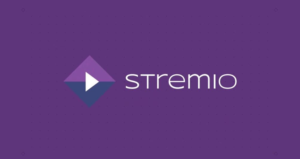Due to the COVID-19 pandemic, technological advancements have seen a huge rise in acceptability over the last two years. Currently, there are five billion people using digital devices worldwide, or more than 60% of the world’s population. So, in a world where the digital sphere is dominating all other sectors, the most recent technologies and developing technical trends are more crucial than ever. The top 9 rising technological trends for 2022 are listed below so you can keep an eye on them and try to take full advantage of them to progress your profession.
Machine learning and artificial intelligence
The worldwide AI market size is anticipated to see unparalleled levels of growth between 2022 and 2029, with a predicted CAGR of 20.1%. For instance, the demand for AI has spread into the healthcare sector to address the worldwide pandemic, with models and tools capable of enhancing and complementing conventional analytics and decision-making frameworks.
In the upcoming years, honing your abilities in this area can pay you handsomely. As the need for AI and ML increases across sectors, new jobs will be created in development, engineering, analysis, tech support, and maintenance.
Internet of things (IoT)
IoT is a key technology for creating a network of linked devices that can share data and information continuously and instantaneously. In the upcoming years, we’ll see a sharp rise in the volume of data generated by IoT connections, with the total quantity of IoT data expected to exceed 79 zettabytes by 2025. A wide number of career opportunities, including those in the automobile, smart home, telecommunications, wearable fitness, etc. industries, are made possible by the technology’s widespread use.
Cybersecurity
Unlike the other technologies covered in this essay, cybersecurity is already well-established in the IT sector. AI-enabled phishing and network intrusion are two of the most frequent cyberattacks that businesses deal with, and they can have serious repercussions like data theft or revenue loss. Therefore, a career in cybersecurity is profitable, but it also necessitates ongoing skill development to stay up with the industry’s changing trends. Cybersecurity will continue to become a more urgent issue as the present digital age develops and more and more gadgets become connected.
Quantum computing (QC)
In order to solve problems, quantum computing makes use of quantum mechanics rules like superposition. You may rely on QC to offer solutions to issues like how to choose the optimum routes for a small number of tankers in a global shipping network. The global QC industry has revenues estimated at $412 million as of 2020. By 2027, the global QC market will surpass the $8 billion threshold because of its current rate of expansion and usage.
Robotic process automation (RPA)
Organizations from many industries are using RPA to automate a variety of organizational tasks. Similar to AI, robotic process automation, or RPA, can be seen as a threat to employment since it is based on automation utilizing specialized software. However, by 2023, it is anticipated that the RPA industry would generate more than $10 billion in worldwide sales. Knowledge employees today have a strong basis for employment as programmers, RPA analyzers, and developers, to name a few.
Augmented reality (AR) and virtual reality (VR)
It is well known that AR and VR offer an improved experience that mixes the virtual and real worlds with improved 3-D visuals.
In the future, AR and VR will be beneficial to a range of industries, including gaming, e-commerce, marketing, and education. By 2024, it is predicted that the worldwide VR gaming market would generate $2.4 billion in sales.
Edge Computing
IoT devices and business applications are more closely integrated thanks to a distributed computing architecture termed edge computing. This technology is emerging as a technique of obtaining considerable commercial benefits and useful insights due to increasing data accessibility. Additionally, as the number of IoT devices rises, edge computing will be used more frequently.
Blockchain
The technology that makes it possible for cryptocurrencies to exist is known as blockchain. A private key may be used to access BTC, a digital asset, from an electronic wallet where it is kept. A bitcoin wallet program automatically creates wallet addresses and signs outbound transactions using a private key.
Blockchain technology has swept the globe, from Bitcoin to NFTs. Blockchain is a decentralized set of related records and verified documents that is sometimes referred to as an electronic “ledger.” By 2024, it is expected that the global spending on blockchain solutions would reach $19 billion. Even at this early stage of its development, blockchain has developed into a sizable business in its own right because of the promise of the technology and the substantial financial interest in the potential uses it may bring.
Final Thoughts
You may anticipate quicker and more significant advances in the near future thanks to significant technical advancements in recent years. It is reasonable to say that IT professionals now need to focus on other things outside just keeping up with current developments. As a result, in order to stay relevant in the rapidly evolving business world, it is imperative that you continue learning and updating your abilities. Professionals that have the necessary training and skill sets will always be in demand.







